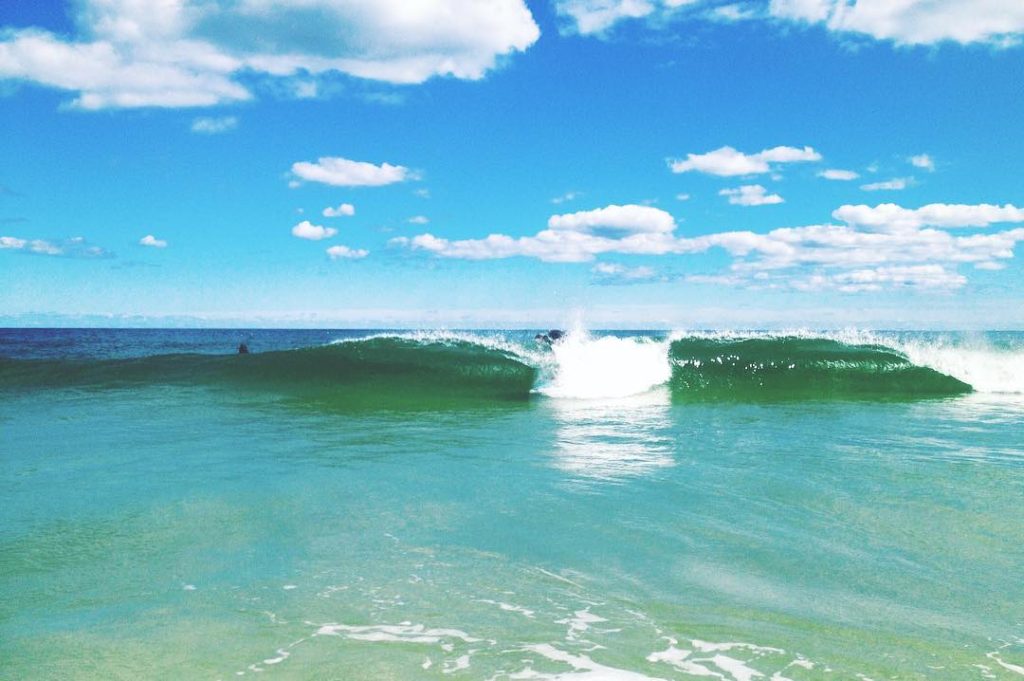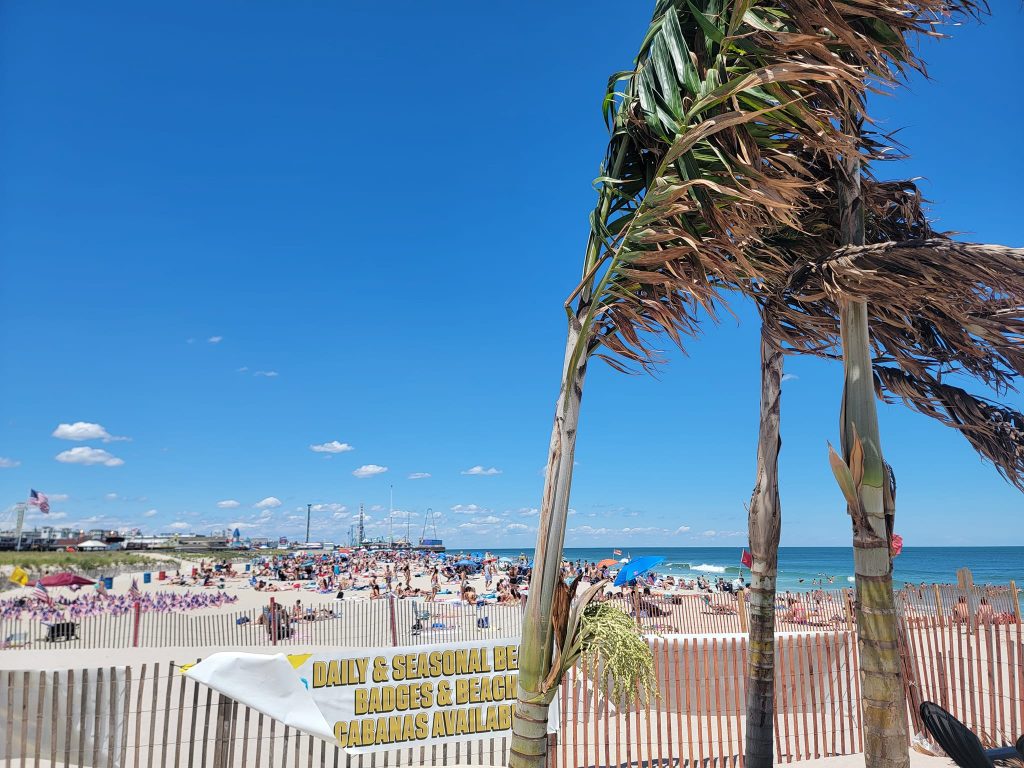
Turquoise water at the Jersey Shore, June 2024. (Reader-Submitted Photo)
If you fell asleep somewhere and woke up on a Jersey Shore beach over the last couple of weeks, you’d be forgiven if you may have wondered whether you woke up on a tropical island.
New Jersey’s ocean water colors have transformed from their usual dark-blue tint to a more Caribbean feel recently, leaving many Shore residents and visitors to ask why – and keep their fingers crossed that the turqoise-shaded, clear water will remain. The good news, one meteorologist told Shorebeat, is that it appears the Atlantic Ocean in New Jersey may retain its much-talked-about tint for some time to come as the summer season officially rolls in.
“Most like what’s occurring is that we’ve been having a lot of south-westerly winds,” said meteorologist Steven DiMartino, whose website NY-NJ-PA Weather website specializes in custom forecasts for subscribers and private clients. “When you have that dominant wind set up for several weeks, you end up pushing the Gulf Stream closer to our shores.”
While New Jersey’s ocean water temperatures are not significantly above normal, they are slightly elevated as the stream, a warm current that flows from the Gulf of Mexico, around the Florida strait and up the eastern seaboard, pushes closer to shore.
“What people are seeing are some influences from the Gulf Stream due to the dominant winds and currents,” DiMartino said, as compared to last year, when northerly winds dominated the scene. “This year, with winds coming the south and southeast, you have influences from the Gulf Stream pushing toward the cost and more tropical influence.
Beachgoers with most sensitive of palates may also notice a change in salinity of ocean water at the moment.
“Colder water has more salt,” said DiMartino added.
Some marine biologists have also pointed to an increased level of phytoplankton bloom, in combination with the currents, that has produced the light-colored water up and down the coastline. Environmental advocates were also quick to point out that New Jersey’s ocean water – once derided for their uncleanliness – are among the healthiest in the nation due to the cessation of ocean dumping and the state’s water monitoring program.
In an interview with the News12 New Jersey cable network, Clean Ocean Action founder Cindy Zipf told the outlet that the Jersey Shore is “the ultimate comeback kid.”

Tropical views outside The Ocean View Restaurant in Seaside Heights, June 2024. (Photo: Ocean View Restaurant)
So, how long will the uniquely-colored waters remain that way? And could they have any negative effects, such as an elevated risk of hurricanes this year? The news appears good on both counts.
Water temperatures “are running well above average once you get down to the Delmarva peninsula,” said DiMartino. “We are running slightly above average in Cape May up to Ocean County, and near average once you get to Monmouth County and up to Long Island.”
“We should have this stick around for most of the summer,” he said. “It will back off when more cold fronts move through, but since we’re moving into the heart of the summer, those southeasterly flows are going to continue to be a factor of the Gulf Stream moving into the near-shore waters.”
As for hurricanes, both the National Hurricane Center and the University of Colorado’s renowned hurricane research center are calling for a more active season than normal. Those predictions, however, do not necessarily mean New Jersey itself is at a higher or lower risk of being hit with a storm compared to other seasons.
“For hurricanes up here to be sustained, you need water temperatures over 80 degrees or the stars to align very quickly,” such as they did when Superstorm Sandy hit in 2012, said DiMartino. “Typically what happens when these storms get near here is that they rapidly weaken, but still produce more rain. It’s not like we’re going from water temperatures in the 60s to the temperatures in the 80s overnight.”
There may be one down-side, however.
“Keep an eye on jellyfish,” said DiMartino. “You tend to have more when you have less salinity near the coastal waters.”